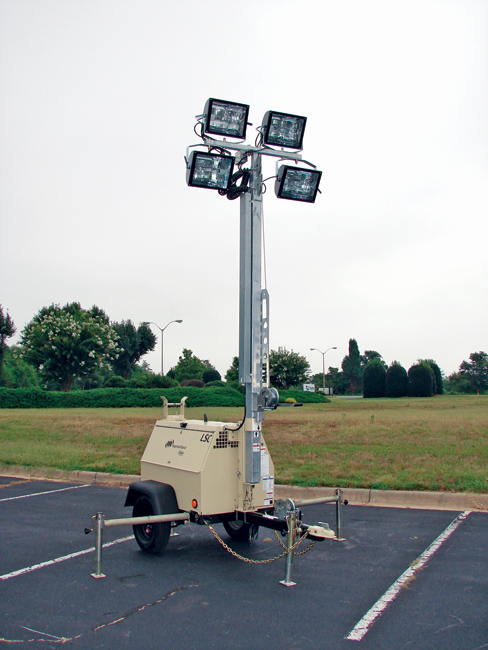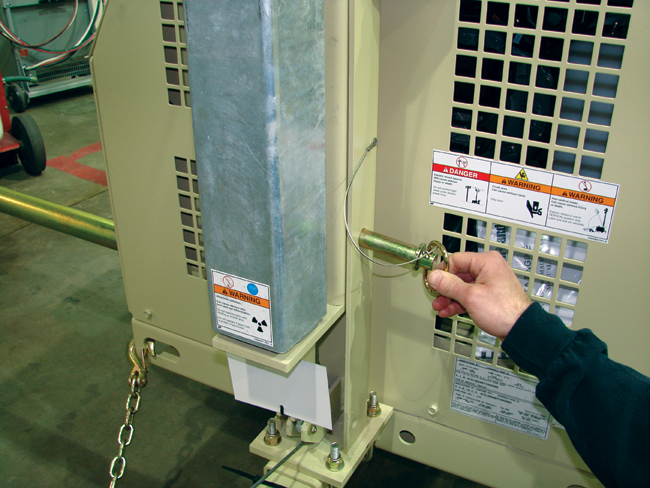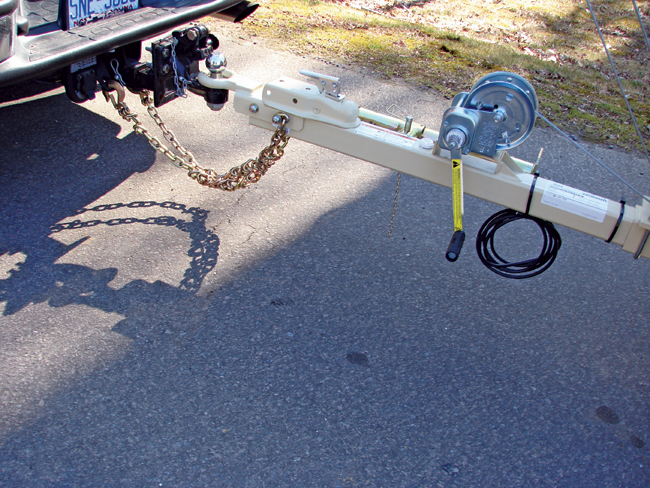Service Illuminated
The light tower can often be an under-appreciated piece of machinery. But if your crew needs to work after the sun goes down, a well-maintained light tower can help make sure the workers get the job done. If the lights go out, it could mean time and money lost. The key to keeping the lights on? Maintenance.
The main function of preventive maintenance is to extend the life, or hours of usage, of any machine — and put off the need for extensive and sometimes expensive repair. Many components on portable light towers require periodic servicing to provide maximum output and performance.

Preventive maintenance checks should be performed at regular intervals — daily, weekly, monthly, quarterly and annually, says Jack Wright, electronic engine product support and training manager at Doosan Portable Power. “Light tower maintenance schedules are based on normal operation of the unit,” says Wright.
“However, maintenance schedules should be adapted to the operating environment.” If the light tower is operating on a construction site in dusty, dirty or other harsh conditions, the unit should be serviced more frequently. If operating in an event environment or used infrequently, the unit may not need to be serviced as often. Operators and maintenance technicians should always consult the light tower’s operating manual to know when systems need to be inspected.
Before attempting any repair or maintenance to the light tower, disconnect the engine battery cables and all electrical leads to avoid an unauthorized start or the possibility of severe personal injury or damage to the equipment.
The Day-to-Day Routine
“Checking the machine daily is the best way to prevent any damage in the future,” says Wright. Daily preventive checks should take place before operation start-up each day. If the machine isn’t being used every day, these maintenance checks should be done before each use. Give the light tower a walk-around visual inspection to ensure the machine has not been moved, tampered with or obviously damaged since its last use. Look for: loose wire routing clamps; evidence of arcing around electrical terminals; frayed or loose fan belts, hoses and wiring insulation; and obstructions in the air vents.
Check under and within the machine for any obvious fluid leaks. If all looks in order, engine oil, coolant and fuel levels should be checked and filled to amounts adequate for the job at hand. Any water in the fuel filter/water separator unit should be drained. Once all fluids are level, see that clearance above the machine is clear of all electrical wires. Remove the mast lock pin and inspect cables for any kinks, wear or fraying. Do not use the tower if any damage is seen. If all is clear, reinsert the lock pin and place it in the lock position.
Erect the mast carefully, stopping if anything sounds or looks out of place. When complete, lock and position the lights. Once the light tower engine is running, turn the lights on one by one. “Turning lights on and off individually alleviates a stress or heavy load put on the generator,” says Wright. After turning off each of the lights, he says to let the engine run for another minute without the lights on to “cool” the engine before shutting it off. Doing so can extend the life of the machine. At the end of each day, clean any oil and dirt accumulated during operation from the light tower unit, as well as refill the fuel tank. “Keeping a full fuel tank minimizes water and condensation, and it also prevents bacteria from growing in the tank,” says Wright.
After lowering the mast of the light tower, make sure cables have slight tension on them to prevent fraying, wear and other damage to the cables during transportation.
Ahh, Clean Air
The air cleaner provides maximum protection against any airborne dust, which can cause a condition called dusting. “It only takes one teaspoon of dust to destroy a diesel engine,” says Wright. To prevent damage, the air cleaner’s precleaner dirt dump valve should be checked on a weekly basis. The best way to ensure that the valve isn’t clogged is simply to squeeze it. If it is clogged or the filter needs to be replaced, these steps should be taken to service the air cleaner:
- Remove the filter element.
- Inspect the air cleaner housing for any condition that might cause a leak.
- Wipe the inside of the air cleaner housing with a clean, damp cloth to remove accumulated dirt to improve the seal for the filter gasket.
- Install the new filter element.
Along with servicing the air cleaner, inspect the tire condition and air pressure on a weekly basis. Tires that have cuts, cracks or worn tread should be repaired or replaced before moving and using the light tower. Battery connections should also be inspected for tight, clean connections, as well as corrosion.
The Monthly Inspection
The main component of the light tower that should be checked on a monthly basis is the engine radiator. The exterior of the radiator should be free and clear of any obstructions, dirt and debris. If any are present, water or compressed air containing a non-flammable solvent should be blown in the opposite direction of the normal air flow. If the radiator is clogged internally, use a commercial product and your supplier’s recommended procedure to reverse flushing and correct the problem. Not wanting to take on this task on your own? Take the portable light tower to an appropriate repair facility to ensure that the radiator is cleaned and serviced properly.
Other maintenance that should be completed on a monthly basis includes: cleaning and lubricating the sliding surfaces of the mast and support; inspecting and cleaning all flexible hoses used for water and fuel, as well as the intake hoses from the air cleaner; and checking the engine protection shutdown system if this is available on the piece of equipment.
Long-Term Checkups
Keeping up with the routine checks should help you become aware of the inner workings of your portable light tower and when more significant components of the equipment, such as the control compartment and the engine, need attention. Refer to your engine operator manual to complete proper engine maintenance for your machine in a timely manner. At the six-month mark, maintenance tasks recommended are draining the engine, replacing the fuel and water separator element and repacking the wheel bearings and grease seals.
Sara Broek provides public relations to Doosan Portable Power at Two Rivers Marketing in Des Moines, Iowa.
Out Like a Light
Four Things to Remember when Replacing Light Tower Bulbs
The light fixtures and bulbs of a portable light tower are the components that will need the most attention. For newer models with a square-style fixture, take the following steps to replace the light bulb:
- Even when replacing a light bulb, use the same precautions as before: Shut the engine down and disconnect the battery cables and all electrical leads. The light bulb should be cool to the touch before performing any maintenance on the fixture. If you need to replace a bulb on the job, ensure that the machine has been turned off for at least 10 to 15 minutes. Four retaining screws keep the cover of the light fixture in place. Loosen them and remove the cover.
- Inspect the seal on the lens cover, checking for cracks and other damage. Having a clear seal prevents moisture from coming into the light fixture along the edge and under the glass. Clean the glass of the fixture.
- Check the light bulb reflector and remove any dirt or debris. Remove the light bulb retainer; then remove the bulb.
- When installing the new light bulb, do so with gloved hands or with a clean rag. “Any grease or oil left on the glass surface will leave hot spots and disrupt the quality of the glass, which could lead to bulb failure,” said Jack Wright of Doosan Portable Power. Replace the light bulb retainer and make sure it’s snug, and reinstall the cover of the light fixture, making sure it fits on the fixture correctly.



Comments are closed here.